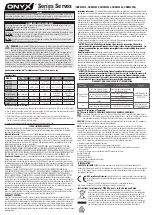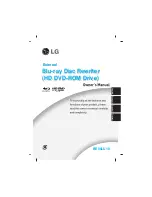
•
•
•
•
1.
2.
3.
4.
5.
•
•
1.
2.
3.
4.
5.
6.
7.
-
-
6.8.3 Connecting the Motor
W A R N I N G
INDUCED VOLTAGE
Induced voltage from output motor cables that run together can charge equipment capacitors, even with the equipment turned
off and locked out/tagged out. Failure to run output motor cables separately or to use shielded cables could result in death or
serious injury.
Run output motor cables separately or use shielded cables.
Simultaneously lock out/tag out all the drives.
Comply with local and national electrical codes for cable sizes. For maximum wire sizes, see
9.2.4 Cable Length and Cross-sec-
.
Follow motor manufacturer wiring requirements.
Motor wiring knockouts or access panels are provided at the base of IP21 (NEMA1/12) and higher units.
Do not wire a starting or pole-changing device (for example, Dahlander motor or slip ring asynchronous motor) between the
drive and the motor.
Procedure
Strip a section of the outer cable insulation.
Position the stripped wire under the cable clamp, establishing mechanical fixation and electrical contact between the cable
shield and ground.
Connect the ground wire to the nearest grounding terminal in accordance with the grounding instructions provided in
6.8.2 Connecting to the Ground
Connect the 3-phase motor wiring to terminals U, V, and W.
Tighten the terminals in accordance with the information provided in
6.6 Fastener Tightening Torques
6.8.4 Connecting the AC Mains
Size the wiring according to the input current of the drive. For maximum wire sizes, see
Comply with local and national electrical codes for cable sizes.
Procedure
Strip a section of the outer cable insulation.
Position the stripped wire under the cable clamp, establishing mechanical fixation and electrical contact between the cable
shield and ground.
Connect the ground wire to the nearest grounding terminal in accordance with the grounding instructions provided in
6.8.2 Connecting to the Ground
For H1-H8 drives, connect the 3-phase AC input power wiring to terminals L1, L2, and L3.
For H13-H14 drives, connect the 3-phase AC input power wiring to terminals R, S, and T.
When supplied from an isolated mains source (IT mains or floating delta) or TT/TN-S mains with a grounded leg (grounded
delta), ensure that
parameter 14-50 RFI Filter
is set to
[0] Off
to avoid damage to the DC link and to reduce ground capacity
currents.
Tighten the terminals in accordance with the information provided in
6.6 Fastener Tightening Torques
6.9 Fuses and Circuit Breakers
6.9.1 Branch Circuit Protection
To prevent fire hazards, protect the branch circuits in an installation, switch gear, machines, and so on, against short circuits and
overcurrent. Follow national and local regulations.
6.9.2 Short-circuit Protection
Danfoss recommends using the fuses and circuit breakers listed in this chapter to protect service personnel or other equipment in
case of an internal failure in the unit or a short circuit on the DC link. The drive provides full short-circuit protection in case of a short
circuit on the motor.
AJ363928382091en-000101 / 130R0983 | 73
Danfoss A/S © 2021.04
Electrical Installation
Considerations
VLT® Flow Drive FC 111
Design Guide
















































